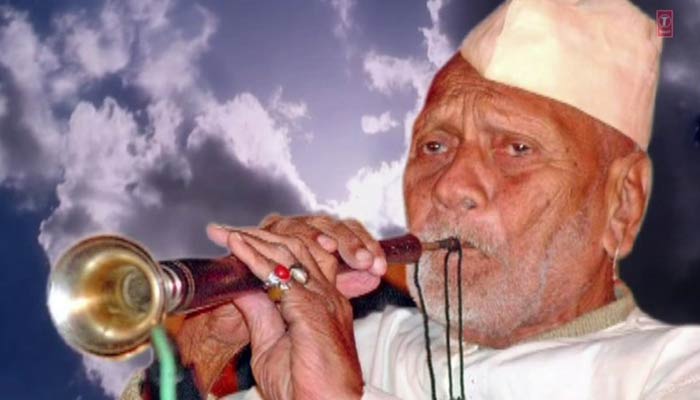Shehnai is an Indian instrument. The name Shehnaai is of Persian origin Persian ‘shah’: King nai: wind instrument). The sound of this beautiful instrument considered promising. In the past, shehnai was part of the naubat or traditional ensembles nine instruments found on the courts. Since long it has been played in temples, marriage and now-a-days in public concerts as well.
It has a metal bell made of brass plated with chromium, secured to the wider end. The length of the instrument is a half to two feet. The Reed down to the narrow blowing end of the blower tube. The wider end of which is mounted to the narrower end of the portion of woden Shehnai. The tubes used in Shehnai consists of patta grass that usually grows in the rivers of North Eren India or the leaves of the palm known as ‘Taad’ in India. Spare tube is mounted in a terminal called “Chapeel ‘are further attached to the mouthpiece, as appropriate. The wooden part of the tool is cut out and formed from the outer side of a small mini lathe machine as shown in the adjacent photograph.
Shehnai is a most sensitive and intricate Indian musical wind instrument. It is actually the way the lips and tongue play on the reed mouthpiece and the way the holes opened or closed by hand with enormous lung power, breath control and of course, regular practice and intellect of the performer that makes the semitones and quarter tones very effective and beautiful.
Sundri
Sundri is a woodwind instrument, Susheer Vadya and belongs to the group of double reed instrument like Shehnai – The game on auspicious occasions, it’s a pretty popular instrument in the eastern and north-eastern Maharashtra in Vidarbha and Marathwada regions. As an instrument to play in folk-religious rituals, Sundri has a history of several centuries. The instrument can be seen as a prototype of Shehnai, the larger and more sophisticated instrument Hindustani music. Muhari, Murla, Surnai are all cousins to this intrument and used extensively in the folk dances of Orissa and Rajasthan and Northeastern states. Because of its brilliant, high TESSITURA can Sundri clearly audible in the distance. It is ideal to invite participants in the procession and rituals.
In the middle of the twentieth century, mainly due to individual efforts of different artists. This instrument was accepted in Hindustani Concept. Folk musicians have rediscovered the “Sundri” since then.


Published by